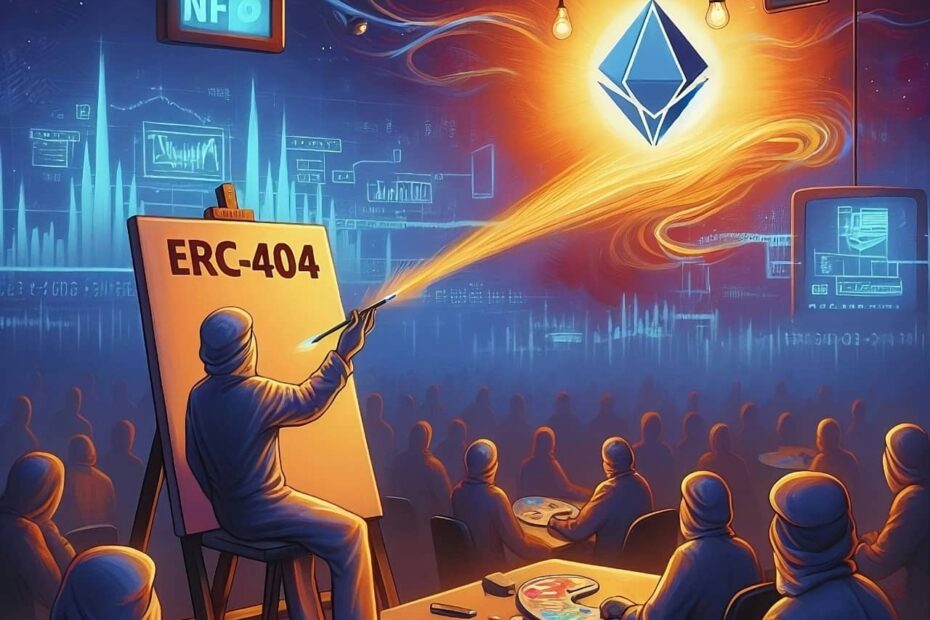In the Ethereum community, there is a lot of talk about a new development that responds to the name ERC-404.
What are ERC-404 and Semi-Fungible Tokens? Although its name could make us think of an Ethereum standard, the truth is that, for the moment, ERC-404 is not an official Ethereum standard. It is a development presented by the creator’s pseudonyms “ctrl” and “Acme.”
The goal of ERC-404 is to combine features of the ERC-20 (fungible tokens) and ERC-721 (non-fungible tokens or NFTs) standards. The combination enables the creation of “semi-fungible” tokens. These tokens can employ features of fungible and non-fungible tokens, going beyond the capabilities that ERC-1155 offers us.
Contents
Reasons behind the creation of ERC-404
ERC-404 addresses the limitations of existing token standards such as ERC-20, ERC-721, and ERC-1155. At the same time, it seeks to leverage the potential of NFTs and the demand for more flexible tokenization solutions. By combining fungible and non-fungible token elements, ERC-404 enables the creation of “semi-fungible” digital assets. The combinations unlock new possibilities for native fractionalization of NFTs, native real-time liquidity, and participation in digital asset trading.
The new development offers the flexibility to own fractions of an NFT. It expands liquidity and investment possibilities, facilitating the trading and exchange of NFTs on the open market. ERC-404 also seeks to integrate tokens with existing DeFi protocols. The integrations allow users to leverage their NFT assets for lending, interest-bearing credit, and yield farming.
To achieve this and attempt to revolutionize tokenization, the team behind ERC-404 has had to overcome technical challenges, security concerns, and skepticism from the crypto community to bring this standard to life. In short, ERC-404 represents a bold attempt to combine the best of two existing token standards to offer an innovative approach to digital assets. It promises to change the way we conceive of tokenization.
Technical and Operational Aspects of ERC-404
The ERC-404 standard introduces several innovative technical and operational aspects that distinguish it from other token standards on the Ethereum blockchain. These aspects are detailed below:
Semi-Fungibility: Combines features of the ERC-20 and ERC-721 standards, enabling the creation of “semi-fungible” tokens that possess properties of both fungible and non-fungible tokens.
Native fractionalization of NFTs: This enables native fractionalization of NFTs, meaning that an NFT can be divided into smaller fractions, enabling shared ownership and enhanced liquidity.
Tokenization of assets: facilitates the representation of real-world assets such as NFTs and their subsequent fractionalization into smaller tokens, opening up new investment and trading opportunities.
Token creation and burning mechanics: Uses token creation and burning mechanisms to control the fractionalization of NFTs, ensuring the backing of the ownership of the underlying assets.
Interoperability with DeFi: Seeks to more easily integrate tokens with existing DeFi protocols, allowing users to leverage their NFT assets for lending, interest-bearing credit, and performance farming.
NFT Ecosystem Upgrade: The upgrade is crucial to the NFT ecosystem by providing a more flexible and liquid way to own, trade, and invest in unique digital assets.
These technical and operational aspects make ERC-404 an innovative approach to address the limitations of existing token standards and provide more flexible and liquid solutions for asset tokenization on the Ethereum blockchain.
Current adoption
Currently, several projects have adapted the ERC-404 standard, demonstrating the potential and usefulness of this innovative development. The most notable ones are:
Pandora
Pandora is a pioneer project in the adoption of the ERC-404 standard. Launched on February 2, Pandora signifies a milestone in developing this experimental token standard. By leveraging ERC-404, Pandora aims to bridge the gap between ERC-20 tokens and NFTs. They offer users a unique combination of fungible and non-fungible features. With its innovative approach to tokenization, Pandora has captured many crypto communities and generated widespread interest in ERC-404.
Reasons why Pandora decided to use ERC-404:
A hybrid of ERC-20 and ERC-721 functionalities: The implementation of ERC-404 in Pandora focuses on combining the function of the ERC-20 and ERC-721 standards. They offer users greater flexibility and versatility in tokenization.
Native Fractionalization and Liquidity: The ERC-404 standard enables the implementation of native fractionalization and liquidity mechanisms. They make it easier for users to exchange and fractionalize NFTs. This feature opens up new possibilities for the trading of unique digital assets.
Market impact and growth of ERC-404: Since its launch, the new development has experienced rapid growth and adoption. The project has witnessed increased trading volume and market capitalization, reflecting the growing demand for innovative token standards such as ERC-404.
DeFrogs
DeFrogs is an Ethereum project centered around a collection of Pepe the Frog-themed NFTs, a controversial meme. Developers launched the project using ERC-404. By adopting ERC-404, DeFrogs seeks to leverage the flexibility offered by this standard, especially about native fractionalization of NFTs, allowing for shared ownership and greater liquidity in the digital asset market. In addition, being a collection of Pepe the Frog-themed NFTs, DeFrogs seeks to leverage the versatility of ERC-404 for creative and commercial applications in the digital asset space.

